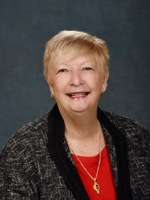
The Problems with Pain Meds: Opioid Abuse
Overdose deaths involving opioid pain medications have jumped more than 300 percent from 1999 through 2011, as clinicians sought to address patients’ pain, priorities of The Joint Commission and Centers for Medicare and Medicaid Services (CMS). But with thousands of people dying every year from opioid-related deaths--28,648 in 2014--Pres. Obama and government agencies have taken a new approach to reduce the prescription of opioids and associated abuse. Nurses and nurse practitioners can be part of the solution.
“With the opioid epidemic at the forefront of a national public health crisis, nurses have the opportunity to address substance abuse disorders across the continuum,” said Marissa Abram, MSN, RN, PMHNP-BC, assistant clinical professor at the College of Nursing and Public Health at Adelphi University in Garden City, N.Y. “We can start with prevention through education; utilize screenings for early identification of risk factors and risky behaviors; develop comprehensive patient and family care management plans that support the successful recovery of the patient.”
Nurse practitioners also play a prominent role, particularly since many states allow NPs to prescribe opioids, according to the American Association of Nurse Practitioners (AANP).
“This has become a huge issue because for years we thought the pain was under-treated,” said Randall Hudspeth, Ph.D., MBA, MS, APRN-CNP, FRE, FAANP, with RSHudspeth Consulting in Boise, Idaho, and a spokesperson on this topic for the AANP. He is a safe opioid prescribing educator for the association.
Approximately 1 in 5 Americans presenting to a physician’s office with non-cancer pain receives an opioid prescription. In 2012, 259 million people received such a prescription. As prescriptions went up, so too did the number of opioid-related deaths and overdoses.
Prescription policies and guidelines
Because of the increasing problems, the Centers for Disease Control and Prevention (CDC) has issued new guidelines for prescribing opioids for chronic pain, and most physicians indicate they are inclined to follow the guidelines. The CDC recommendations include:
• Prescribing three days or less for acute pain;
• Starting at the lowest effective dose;
• Evaluating the benefits and harms within a month of starting a patient on opioids for chronic pain; and,
• Trying nonpharmacologic and nonopioid treatments.
“Nurse practitioners are multimodal and will look at all kinds of pain management options,” said Yvonne D’Arcy, MS, CRNP, CNS, co-chair of the AANP Clinical Interest Group for Pain and Palliative Care and an AANP pain management educator. Nurse practitioners may try heat and cold and nonopioid medications, she explained.
The U.S. Food and Drug Administration has reviewed its opioids policies and required enhanced labeling warnings for immediate-release opioids. And the president has proposed $1.1 billion in new funding to address the opioid epidemic.
More than one-third of Americans blame physicians for the prescription painkiller abuse problem, according to a STAT-Harvard poll. The CDC reports primary care clinicians to prescribe about half of all dispensed opioid prescriptions. Primary care clinicians acknowledge concerns about prescribing the drugs.
The group Physicians for Responsible Opioid Prescribing are asking The Joint Commission to reexamine its pain management standards and CMS to remove the pain-related questions from the Hospital Consumer Assessment of Healthcare Providers and Systems Survey.
Educating clinicians and patients
Hudspeth and D’Arcy have been conducting educational sessions to help prepare nurse practitioners to safely prescribe the drugs.
“There’s a real need to educate NPs about how to prescribe opioids safely and how to protect their patients and their practice,” D’Arcy said.
Clinicians must educate patients that being pain-free is not realistic and discuss a reasonable amount of pain the patient can live with, Hudspeth said. Clinicians must use an opioid abuse tool, conduct urine drug screens, check the pharmacy drug registry program, and ask the patient to sign a patient-provider agreement outlining how he or she will use the prescription, and to only use one pharmacy and one provider.
Red flags of potential opioid abusers
“You also need to know that red flags will come up,” Hudspeth said. That may include late-at-night refills, young people asking for more drugs, single males, a history of alcohol use, and the person who wants total control of their drugs, perhaps requesting three 20 mg pills rather than a 60 mg tablet.
“Nurse practitioners need to be aware of this,” Hudspeth said. “[Prescribing] is a huge responsibility.”
Want a pain-free way to find a new travel nursing job? Sign up for free job alerts or apply today to get connected with an American Mobile recruiter.
© 2016. AMN Healthcare, Inc. All Rights Reserved.


